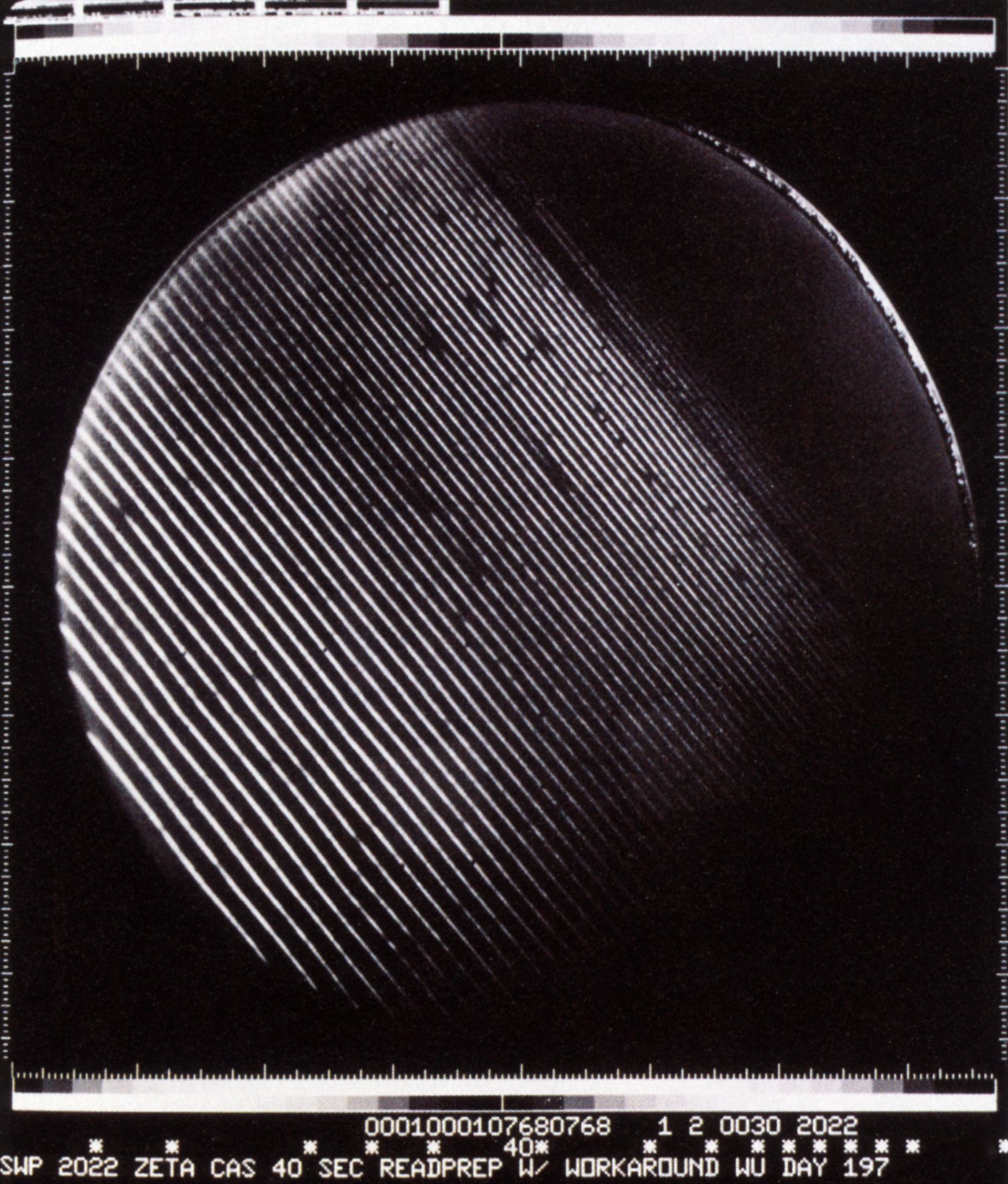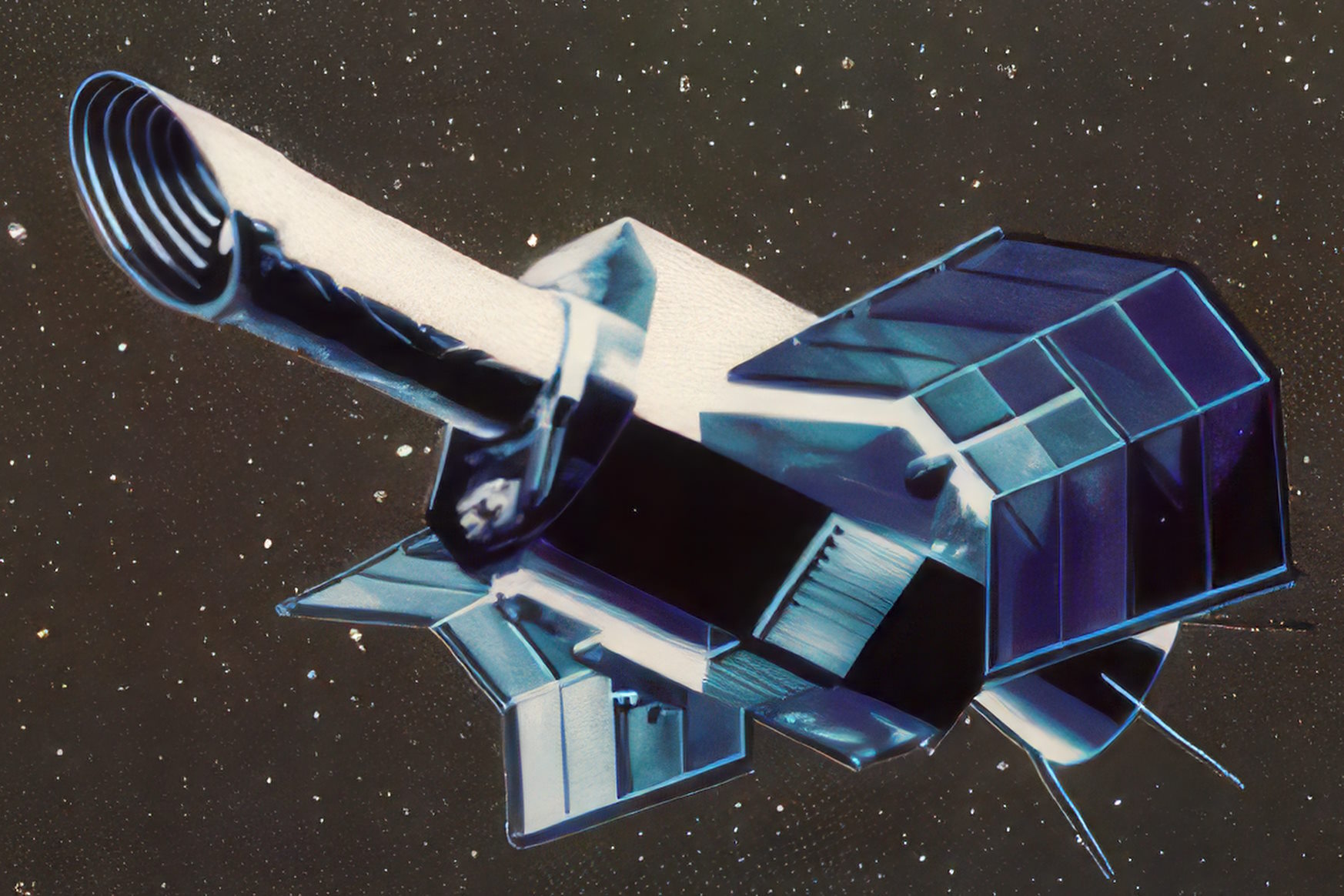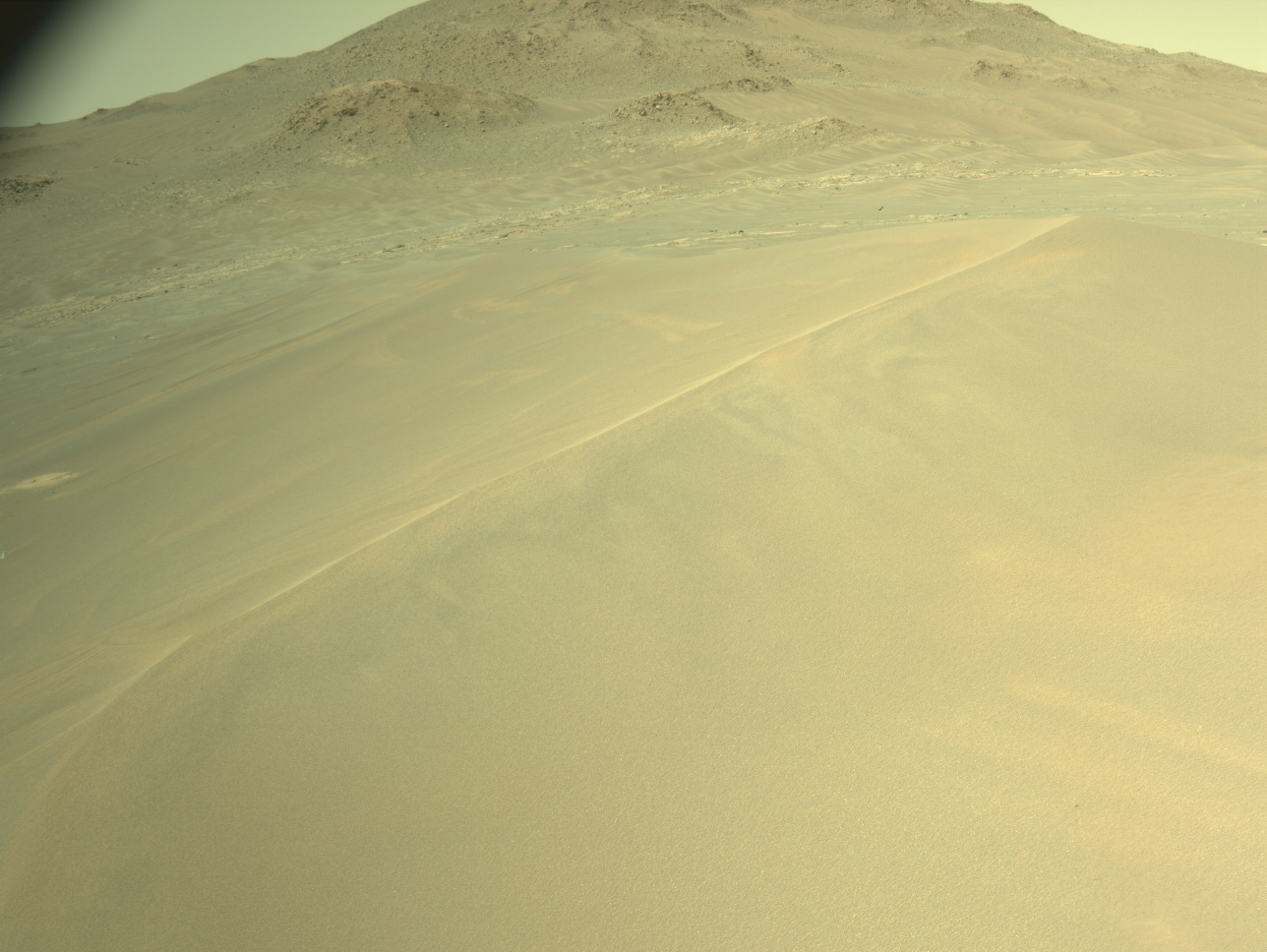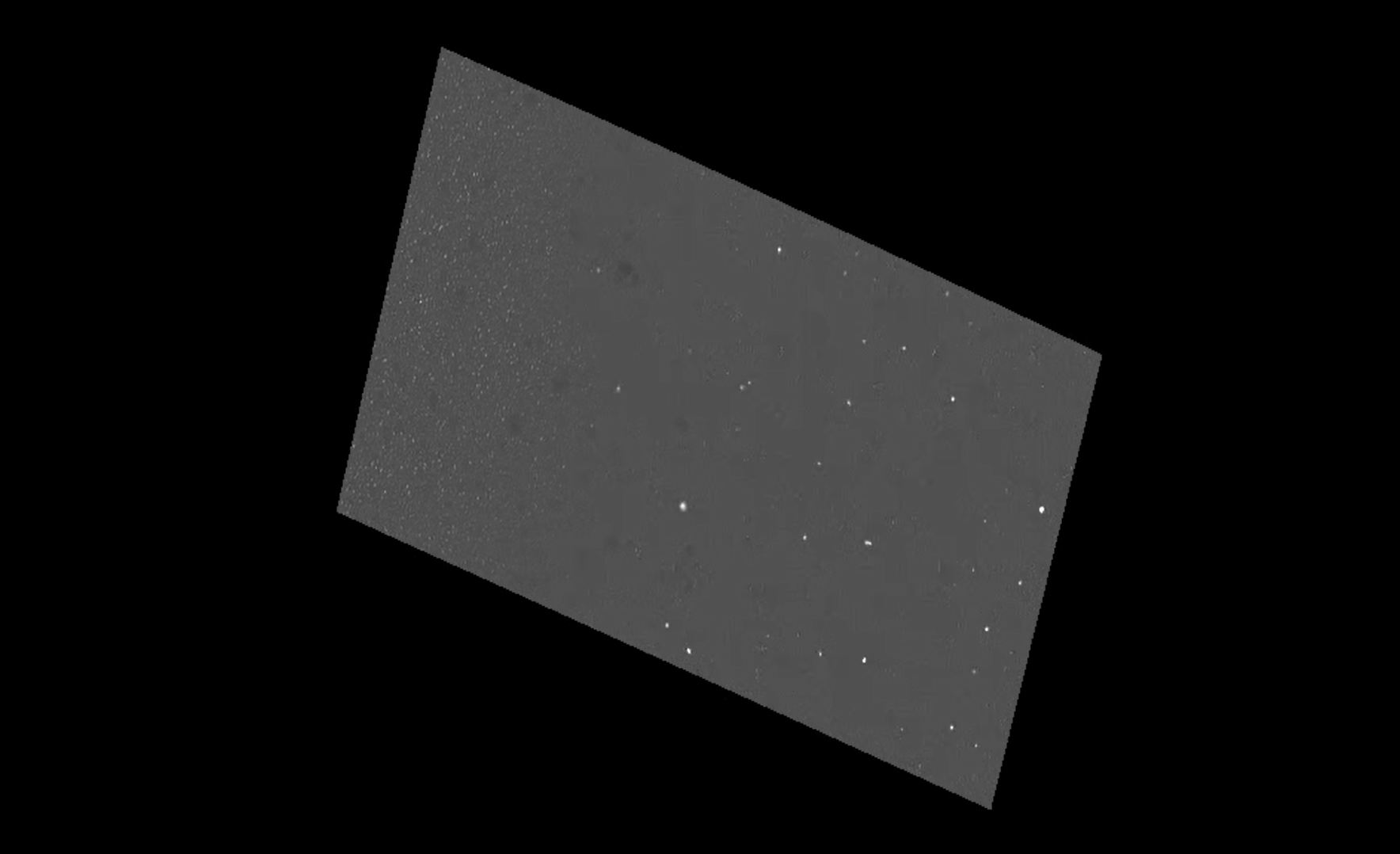IUE
The IUE (International Ultraviolet Explorer) satellite was an orbiting astronomical observatory for ultraviolet spectroscopy between 115 and 325 nanometers. It was a joint venture between NASA, the United Kingdom, and ESA (European Space Agency). Objects of study ranged from Halley’s comet and planets in the solar system to hot stars, supernova 1987A, and active galaxies powered by supermassive black holes.
Type
Launch
Wavelength
Decommissioned
IUE was launched on Jan. 26, 1978. It had an expected lifetime of 3 years, with a goal of 5 years, but exceeded that beyond anyone's wildest dreams. When it was shut down on Sept. 30, 1996, it had been in continuous operation for 18 years and 9 months.
IUE was an international collaboration between three groups: NASA, ESA (European Space Agency), and the United Kingdom's Science and Engineering Research Council. NASA provided the launch, spacecraft engineering support and software. ESA provided the solar panels and a satellite command station outside of Madrid, Spain, and the UK provided the Vidicon cameras. Observing time was split between two spacecraft command stations. NASA operated the spacecraft for 16 hours a day from Goddard Space Flight Center in Greenbelt, Maryland, and VILSPA (the Villafranca satellite control station) operated it for 8 hours a day.
IUE's geosynchronous orbit allowed for real-time operation, which made IUE very flexible. Astronomers came to the spacecraft command stations to direct their observations and inspect the data as they were collected, much as they do at ground-based observatories. Two on-board spectrographs covered ultraviolet wavelengths from 1200 to 3350 Angstroms.

Observers from around the world took advantage of this workhorse observatory, gathering data from a wide variety of astronomical sources. Short and long wavelength spectrographic cameras covered ultraviolet wavelengths from about 115 to 325 nanometers. These wavelengths of electromagnetic radiation are obscured from the ground by Earth's protective ozone layer.
Astronomers study multiple wavelengths in order to learn more about the objects of the universe. Simultaneous data acquisition is essential in order to gain the most knowledge of certain transient events. Thus, very often IUE was used in conjunction with other telescopes from around the world. These collaborations involved spacecraft such as NASA's Hubble Space Telescope, the Roentgen Satellite, the Compton Gamma Ray Observatory, the Voyager probes, the ASTRO-1 and ASTRO-2 missions, the Extreme Ultraviolet Explorer, Japan's Advanced Satellite for Cosmology and Astrophysics, as well as numerous ground-based observatories.
Science Highlights
- Objects observed by IUE include virtually every type of object in the universe, from planets and stars to galaxies.
- One of IUE's strengths was the ability to rapidly respond to targets of opportunity such as comets, novae, and supernovae.
- IUE obtained the only ultraviolet data of the outburst of supernova 1987a in the Large Magellanic Cloud.
- By tracking on the nucleus of fast-moving Comet IRAS-Araki-Alcock, IUE was able to obtain the first detection of molecular sulfur in a comet.
- During July 1994, IUE (along with the rest of the globe) spent a good deal of time observing Jupiter when Comet Shoemaker-Levy collided with the planet.




































